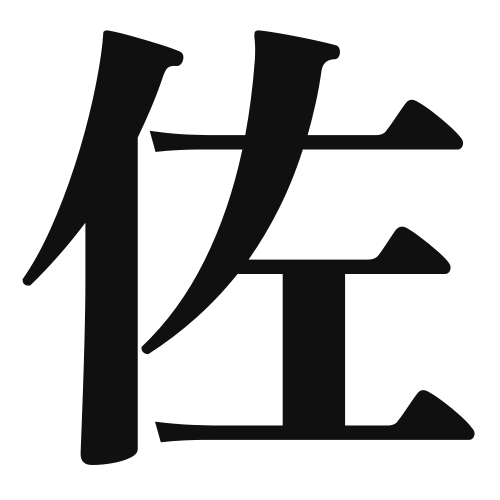1. Overview of Meaning
The kanji “佐” (sa) generally means “to assist” or “to help.” It is often used in contexts where support or aid is provided to someone or something.
2. Formation and Radical
Formation of the Kanji: The kanji “佐” is classified as a phono-semantic compound (形声文字), which means it combines a phonetic component with a semantic component. The left part, “左” (meaning “left”), suggests a phonetic reading, while the right part indicates the meaning related to assistance.
Radical: The radical for “佐” is “助” (meaning “to help”), which is also related to the concept of assistance.
3. Examples of Usage
Common Words and Phrases: Some frequently used words that include “佐” are:
- 助手 (じょしゅ, joshu) – assistant
- 佐賀 (さが, Saga) – a place name in Japan
Example Sentences in Daily Conversation:
- 彼は私のプロジェクトを佐助してくれました。 (かれはわたしのぷろじぇくとをさすけてくれました。) – He assisted me with my project.
- このアプリは仕事を佐助するために作られました。 (このあぷりはしごとをさすけするためにつくられました。) – This app was created to assist with work.
4. Synonyms and Antonyms
Similar Kanji: A kanji with a similar meaning is “助” (じょ, jo), which also means “to help.” However, “助” is more commonly used in contexts of rescue or saving, while “佐” is more about assistance in tasks.
Opposite Kanji: An antonym for “佐” is “妨” (ぼう, bou), which means “to hinder” or “to obstruct.” This represents the opposite action of providing assistance.
5. Cultural and Historical Background
Relation to Japanese Culture: The kanji “佐” is often associated with roles that involve support, such as in the context of samurai and their retainers, who provided assistance to their lords.
Proverbs and Idioms: One common saying is “助け合い” (たすけあい, tasukeai), which means “helping each other.” This reflects the cultural value placed on mutual assistance in Japanese society.
